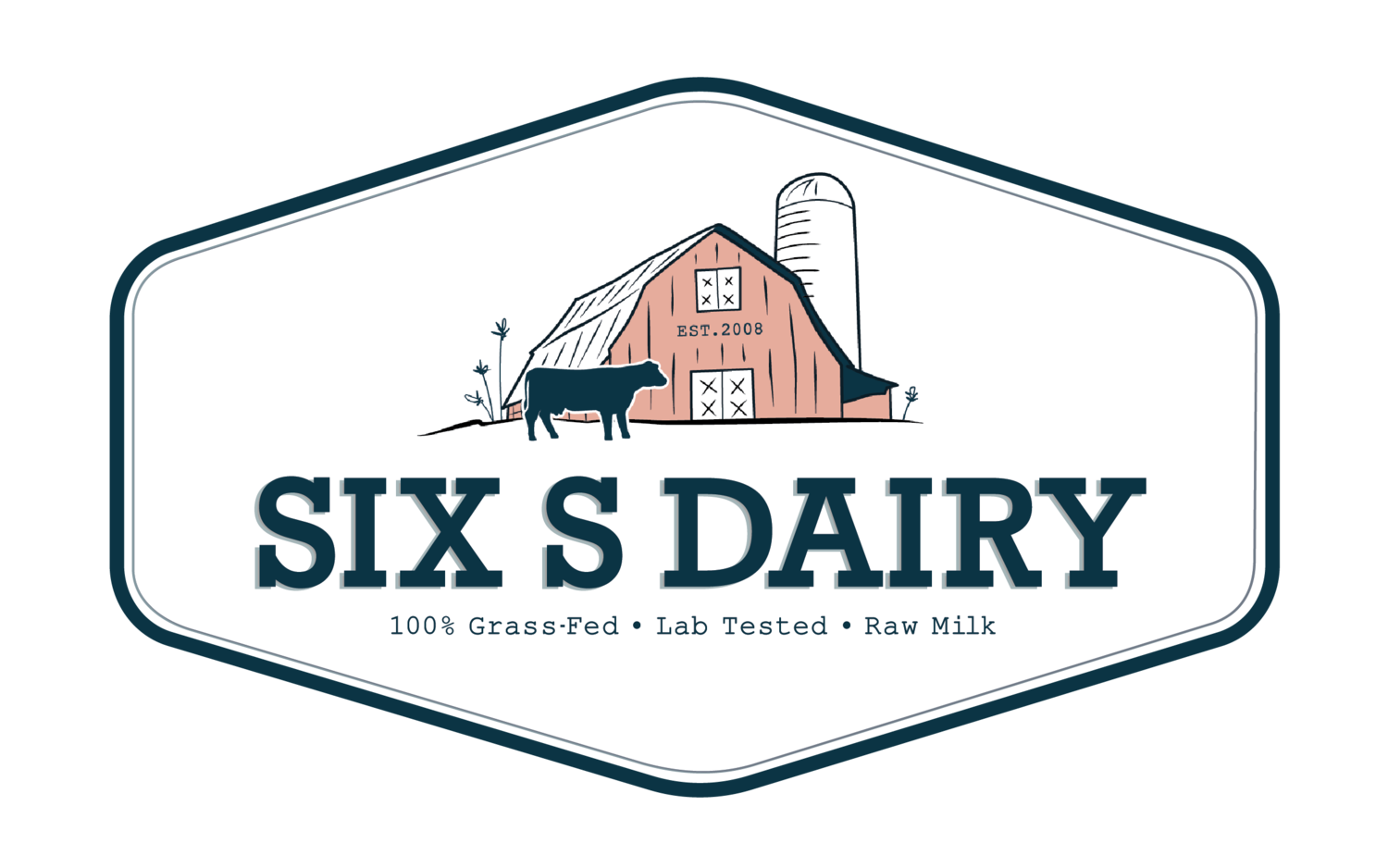Free Guide: 10 Questions to Ask When Choosing a Raw Milk Farmer
Smiley this morning, not a super pretty shot, but such is the gloomy sky in Michigan in November!
There’s a LOT that goes into food production that most people never think about.
I thought it might be fun to give you a behind the scenes look at one aspect of our dairy herd health care.
Our dairy cows are in general very healthy and rarely need any intervention from us but just like nursing human moms, they too sometimes develop mastitis.
Last night while filtering the milk, we noticed just a couple of very small clumps. This is often the very first sign of mastitis.
So, then we had to put our detective hats on. Because of the milking order and when the clumps were noticed, we were able to narrow it down to two cows.
This morning prior to milking I performed a California Mastitis Test also called a CMT, on those two cows, Smiley and Grace. A CMT gives a very general indication of increased somatic cells in milk. An increased number of somatic cells in milk is an indicator that the mammary gland is working to fight off an infection.
This is the California Mastitis Test. You can see that the circle on the right in the front looks thicker, or gel like after adding the testing material to it, this indicates an increased somatic cell count.
Grace’s CMT results looked great, with no increase in somatic cells. Three of Smiley’s quarters (each mammary gland is called a quarter) looked great, but her right front quarter showed an increased somatic cell count, letting us know that’s the quarter that needs a little extra lovin.
If I were to ask in most of the farming groups I’m a part of how to treat a cow who has mastitis, the answer would almost overwhelmingly be to start antibiotics. That’s just what’s done on most conventional farms.
We don’t believe in antibiotic use unless it’s a matter of life and death or the animal’s quality of life depends on it. We don’t feel it’s good for the animal, and it’s not worth the possible antibiotic residue in the meat or milk.
The Porta SCC is another test that I ran later this morning to give a more exact count on the somatic cell count in the affected quarter, this will give me something concrete to compair to when I test it again in a week.
While we’ve always tried to use natural treatments for our animals, it wasn’t until I took a course our naturopath hosts, that I’ve gained the knowledge and skills to really target treatment.
Over the past year or two, we have built quite the stash of natural remedies in our personal medicine cabinet. When the animals need some support, we reach for a lot of the same remedies.
This morning I was able to muscle test to see which items we had on hand that would best support Smiley in her healing process. The result was some homeopatics, some herbs, and some essential oils.
So, for the next few days, we will milk Smiley’s affected quarter separately, discard the milk, and sanitize the milker before milking the next cow.
She will receive three treatments of an essential oil blend infused directly into that quarter, homeopatics and echinacea for three days, increased vitamin e, garlic, and oregano twice a day for a week, as well as have an essential oil blend massaged into her udder twice a day.
After a week of treatment, we will check the somatic cell count of that quarter to be sure it has lowered and check the milk for any clumps as well as run bacteria counts on the milk. If those all look good, her milk will be ready to go back in the mix.
Is it a little more work than throwing antibiotics at the problem, sure is. But it’s totally worth it!
The note on the whiteboard in the milk house so that everyone is on the same page and know’s just what our girl needs. <3
Two years ago Smiley had mastitis and I treated her naturally, but I didn’t really know what I was doing and it took a long time for it to clear up, like a couple of months. It was a long process.
With the targeted treatment, I started today, we expect Smiley will be in tip-top shape in about a week. How awesome is that?!? Natural remedies continue to blow my mind almost daily.
Do you use any natural health methods in your home? I’d love to hear about them if you do, it’s always great to learn from each other.
As I continue to learn about natural health in the Fiercely Empowered Mama Group, I wanted to let you know about an awesome free course that is being offered in a pop-up Facebook group called Mama’s Fast Tract to Healing & Raising Kiddos Naturally. If you’d like more info on how to join, just shoot me a message on our farm Facebook page: @sixsdairyllc or message me through our contact us page.
If you’re at all interested in learning more about this way of life, and how you can support your family naturally during the insanity that is going on in the world today, I highly recommend you check this Facebook group out, I think you’ll love it! And if I can ever help to answer any questions you might have along the way, please reach out to me, I know it can be overwhelming at first, I’d love to help if I can.
I hope you enjoyed this behind the scenes look at how we treat mastitis are there any other aspects of farm life you’d like to learn about?
Sending much love your way!
My kiddos and I
~ Farmher Jen







